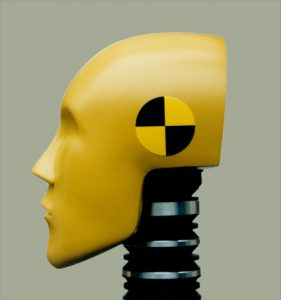 If you live in the San Diego area, you are probably familiar with Uber and Lyft. These ride-sharing services have become extremely popular in Southern California, allowing residents and visitors to take advantage of quicker, and often less expensive rides than taxis. Easier than making a phone call or hailing a cab, Uber and Lyft users can simply use an app to catch a ride. But are customers at risk of serious car accident injuries while they are riding in the backseats of Uber vehicles?
If you live in the San Diego area, you are probably familiar with Uber and Lyft. These ride-sharing services have become extremely popular in Southern California, allowing residents and visitors to take advantage of quicker, and often less expensive rides than taxis. Easier than making a phone call or hailing a cab, Uber and Lyft users can simply use an app to catch a ride. But are customers at risk of serious car accident injuries while they are riding in the backseats of Uber vehicles?
According to a recent article from Digital Trends, in response to the increasing use of Uber, Lyft, and other ride-sharing services, the National Highway Traffic Safety Administration (NHTSA) has decided to begin putting crash-test dummies in back seats within the next few years. Can a shift in car accident testing help to prevent severe and fatal injuries in traffic collisions?
Ride-Sharing Services Expected to Grow, Prompting Need for Testing
Before the rise of ride-sharing services like Uber and Lyft, residents of San Diego, as well as visitors to the city, often relied on taxi-cab services to get from one place to another. Yet over the last few decades, the NHTSA has not made any significant moves to begin testing backseat safety. Consumers paying for car-hire services have been riding in back seats for years. However, it is only now that ride-sharing services have become sufficiently widespread—and are only expected to continue gaining popularity in the coming years—that the NHTSA has begun putting plans into place to test the backseat safety of various automobiles in crashes.
According to the article, “the NHTSA plans to begin putting crash-test dummies in the backseats of test cars beginning in 2019.” Traditionally, crash tests that use dummies to determine the risks of injuries leave the backseats empty. Given that the back seats are not occupied when crash tests occur, “safety enhancements have lagged behind advances made for passengers in the front seat.” According to the NHTSA, if it takes steps to improve car accident safety for passengers in the back seats of vehicles, there will be trade-offs with front-seat safety measures.
Protecting Rear-Seat Passengers
What kinds of safety measures help to prevent injuries among Uber customers in the event of a traffic collision? As the article explains, automakers primarily “rely on seat belts and the rear-seat structure to protection occupants.” Yet many backseat passengers do not wear seat belts as the carmakers intend, and as such could be at serious risk of an injury. Severe injuries among back seat passengers who are not wearing seat belts are so common that doctors have given the injury a name: “partition face.” The article clarifies that this nickname refers to “head injuries sustained when a passenger in the rear seat of a vehicle hits the plexiglass barrier that separates the front and rear of taxi interiors.”
What else can automakers do? Some possible solutions include but are not limited to:
- Side airbags;
- Inflatable seat belts; and
- Seat belt pre-tensioners in the back seat.
The decision to use crash-test dummies in the backseat is an important step in auto accident safety. In the meantime, if you or someone you love got hurt in a crash in Southern California, an experienced San Diego auto accident lawyer can assist you. Contact the Walton Law Firm today for more information about our services.
See Related Blog Posts:
Reducing Alcohol-Related Teen Auto Accidents
Self-Driving Cars Not Yet Safe for Everyday Use, Advocates Say
 North County San Diego Injury Lawyers
North County San Diego Injury Lawyers








